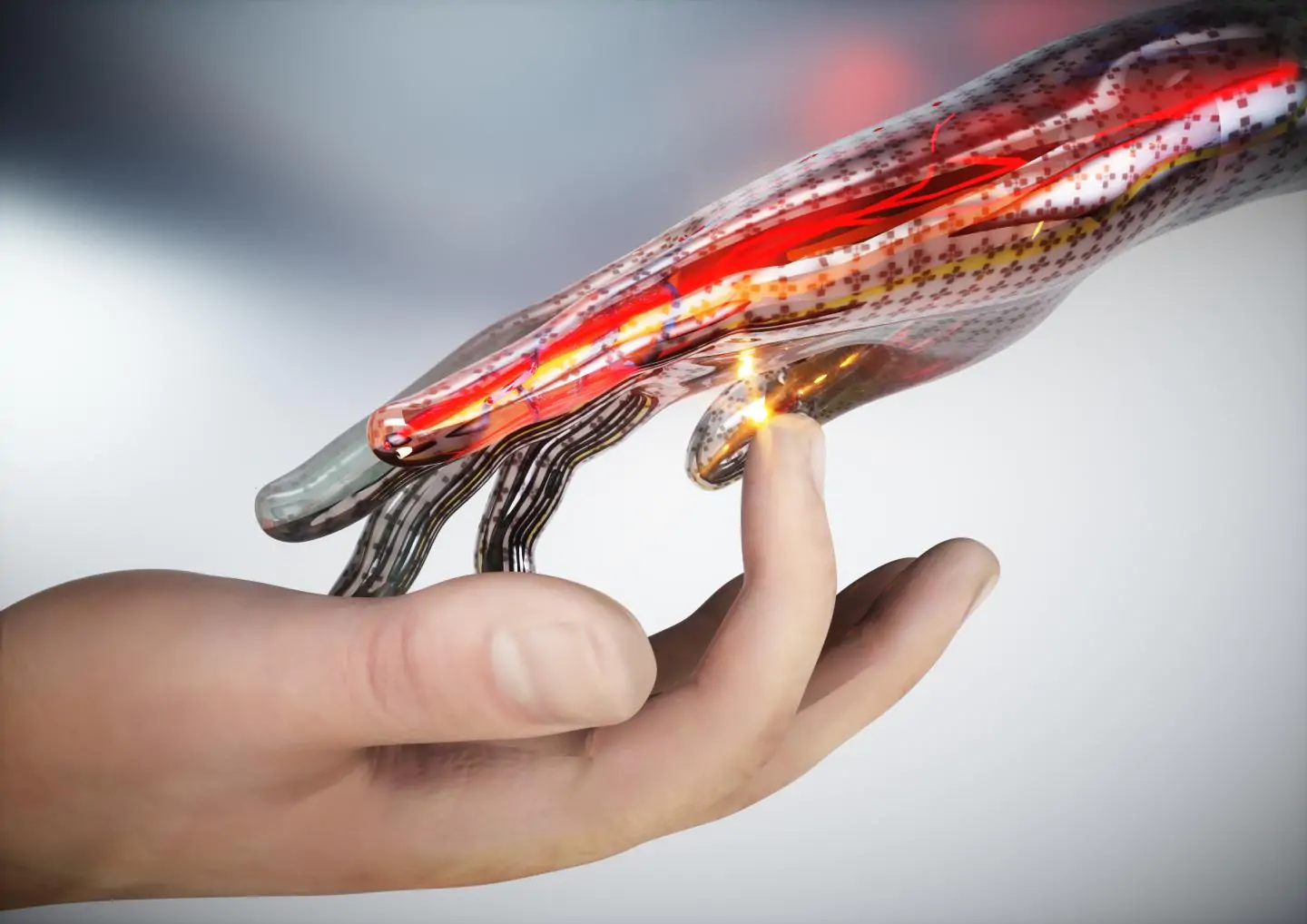A research team has developed electronic artificial skin that reacts to pain just like real skin, paving the way for better prosthetics, smarter robotics, and non-invasive alternatives to skin grafts.
The prototype developed by a team at RMIT University in Melbourne, Australia, can replicate the way human skin perceives pain with an electronic skin. The device mimics the body's near-instantaneous feedback response and can react to painful sensations as fast as nerve signals travel to the brain.
The lead researcher, Professor Madhu Bhaskaran, said the pain sensing prototype represents a significant advance towards next-generation biomedical technologies and intelligent robotics.
The skin is the largest sensory organ in our body, with complex features designed to send out lightning-fast signals when something hurts. No electronic technology had been able to realistically mimic the human sensation of pain, until now.
Madhu Bhaskaran, co-leader of the Functional Materials and Microsystems group at RMIT

How human skin works
We feel sensations through our skin all the time, but our pain response only manifests itself at a certain point (like when we touch something too hot or too sharp). The electronic skin developed at RMIT reacts instantly when pressure, heat or cold reaches a certain threshold. It is a fundamental step in the future development of sophisticated feedback systems that we need to deliver truly intelligent prosthetics and intelligent robotics.
Functional detection prototypes
In addition to the “electronic skin,” the actual pain-sensing prototype, the research team also developed devices that use stretchable electronics that can detect and respond to changes in temperature and pressure. Bhaskaran, said the three functional prototypes were designed to deliver key features of human skin sensing capability in electronic form.
With further development, stretchable artificial skin could also be a future option for non-invasive skin grafts, where the traditional approach is not viable or does not work.
“We need further developments to integrate this technology into biomedical applications. The fundamentals (biocompatibility and skin-like elasticity) are already there,” Bhaskaran said.
How electronic skin works
The new research, published on Advanced Intelligent Systems and filed as a provisional patent, it combines three technologies previously tested and patented by the team:
- Extensible electronics. It combines oxide materials with biocompatible silicon to provide transparent, unbreakable, wearable electronics as thin as a sticker.
- Thermoreactive coatings. Self-modifying coatings 1.000 times thinner than a human hair based on a material that transforms in response to heat.
- Memory that mimics the brain. Electronic memory cells that mimic the way the brain uses long-term memory to recall and store previous information.
The pressure sensor prototype combines extensible electronics and long-term memory cells. The heat sensor brings together temperature-reactive coatings and memory. The pain sensor integrates all three technologies.
PhD researcher Md Ataur Rahman said that memory cells in each prototype of the factors that make up the electronic skin are responsible for triggering a response when pressure, heat or pain has reached a pre-established threshold.
We essentially created the first electronic somatosensors. We have replicated key features of the body's complex system of neurons, neural pathways, and receptors that guide our perception of sensory stimuli
Ataur Rahman, MRIT
Existing technologies used electrical signals to mimic different levels of pain. This new electronic skin can react to real mechanical pressure, temperature and pain and provide the right response. It's a big leap forward. It means that electronic skin knows the difference between gently touching a pin with your finger or accidentally pricking yourself. A fundamental distinction that had never before been achieved electronically.
—
“Artificial Somatosensors: Feedback receptors for electronic skin”. Published on Advanced Intelligent Systems (DOI: 10.1002/aisy.202000094).


